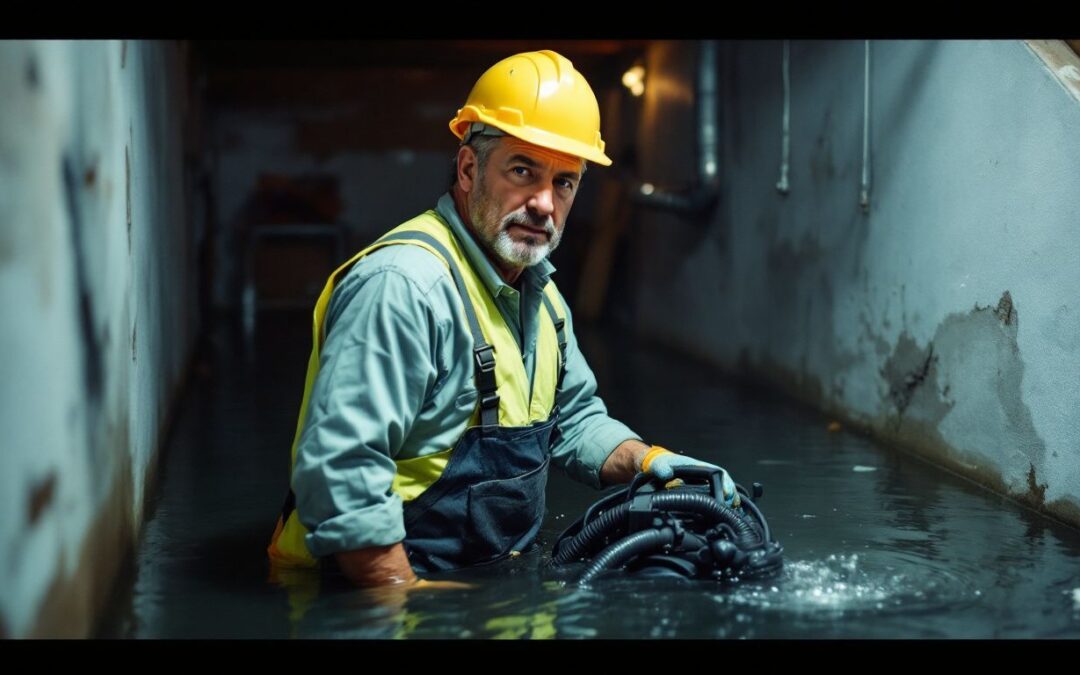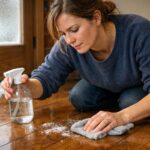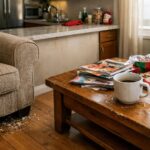Recovering from a natural disaster is tough. Houses get damaged, and people must clean up. It’s hard work and can be dangerous. This is why knowing how to do it safely is crucial. During the house cleaning after flooding or other disasters, folks face many risks like dirty water, broken power lines, and unstable buildings.
One important fact everyone should know: water damage can worsen fast if not dealt with promptly. This blog will guide you through safe natural disaster clean-up practices. You’ll learn about the hazards involved and how to protect yourself using the right tools such as gloves, masks, hard hats, and more advanced equipment like sump pumps for removing water or bulldozers for clearing debris.
Ready to learn? Let’s keep you safe.
Key Takeaways
- Wear personal protective equipment (PPE) like gloves, masks, and hard hats when cleaning up after a natural disaster. This gear protects against injuries from debris, contaminated water, and exposure to harmful chemicals.
- Turn off your home’s main power supply if water gets close to electrical circuits to avoid electrocution risks. Treat all downed power lines as live and maintain a safe distance.
- Use the right tools for cleanup tasks. Chainsaws help cut fallen trees, while wet vacuums and dehumidifiers are crucial for preventing mold growth inside homes after flooding.
- Check buildings for structural stability before starting cleanup efforts. Older homes or those affected by fires may have weakened structures that pose danger during cleanup.
- Keep safety equipment handy and work with others to improve safety measures. Proper waste disposal is essential in keeping the environment clean and preventing health issues post-disaster.
Identifying Common Hazards During Cleanup
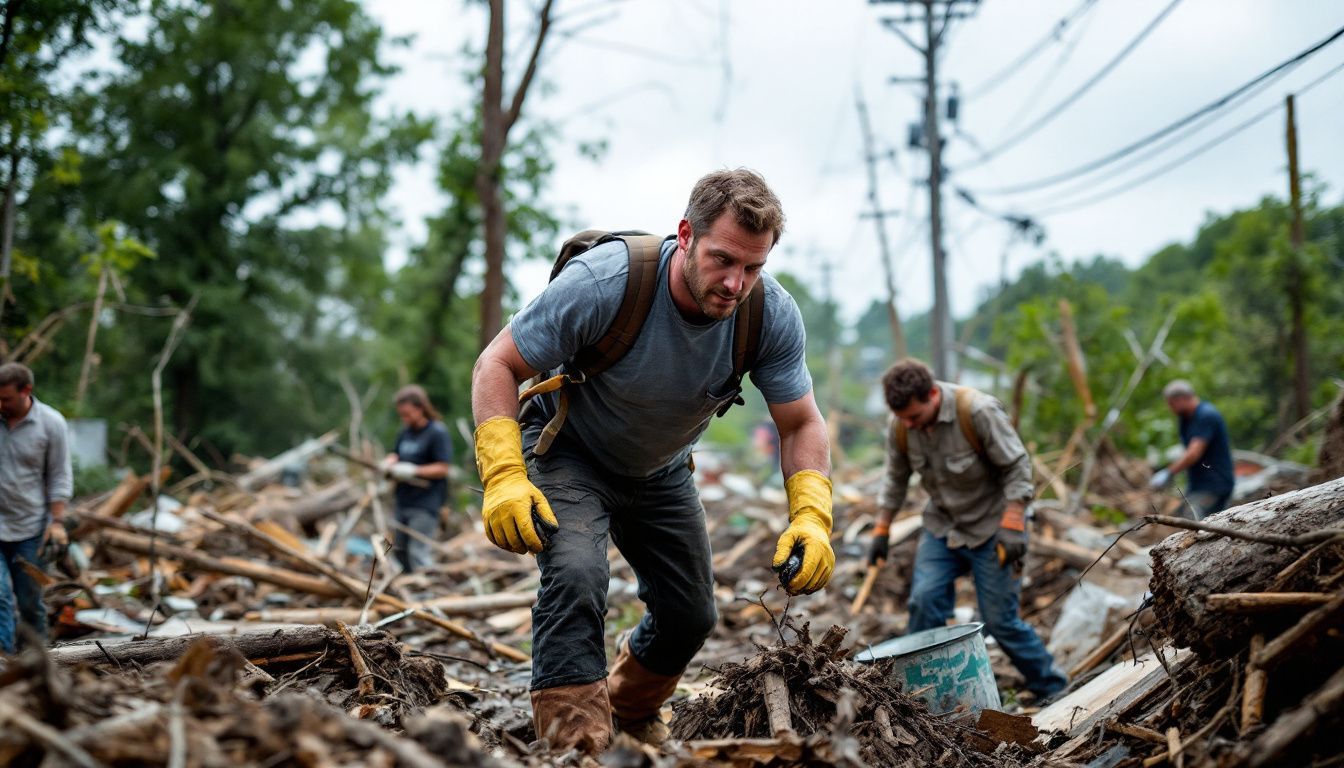
After a natural disaster, people face many dangers while they clean up. Dirty water, live wires, and shaky buildings can hurt someone badly if they’re not careful. This part of the cleanup is critical because knowing what these risks are helps everyone stay safe.
People need to wear the right gear and use tools correctly, like wearing gloves when they handle debris or using a power saw safely to cut through fallen trees. It’s all about keeping an eye out for anything that might cause harm and making smart choices to avoid accidents.
Contaminated water
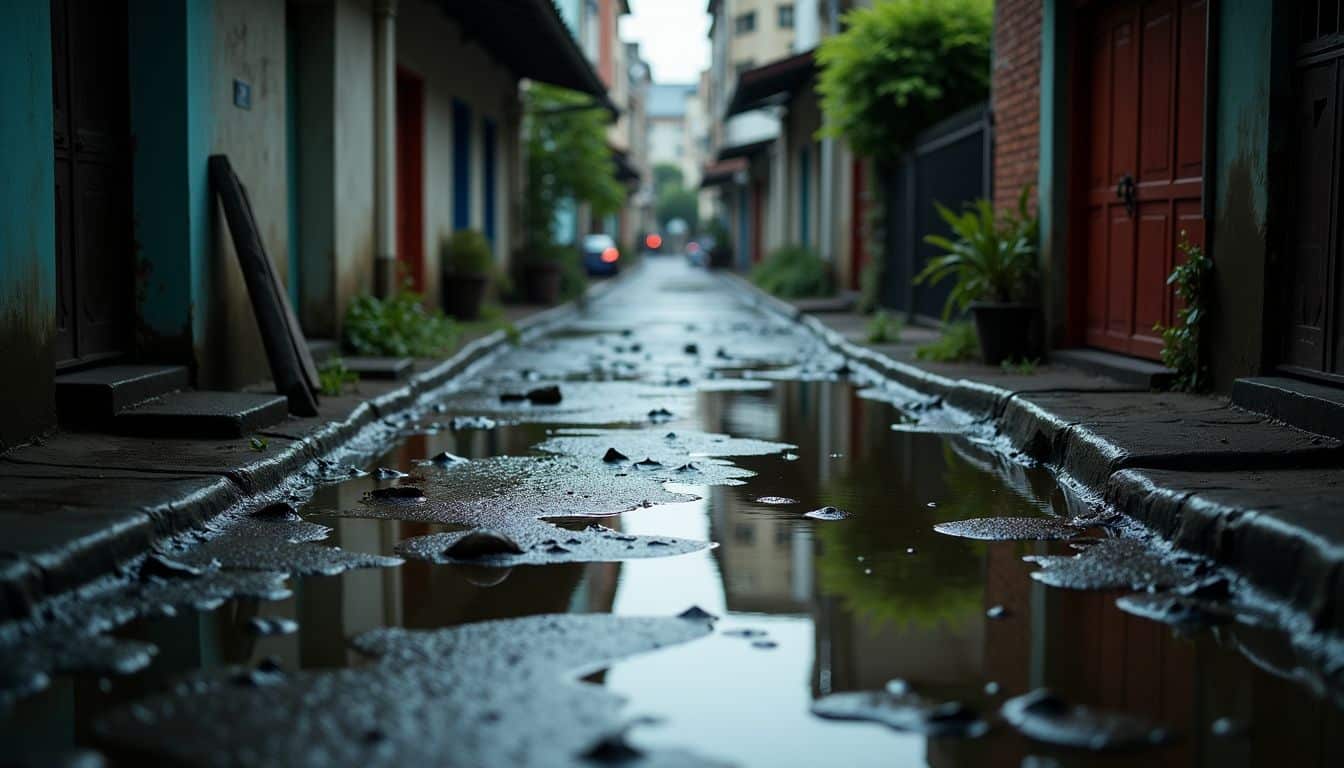
Contaminated water poses serious risks during disaster cleanup. Floodwaters often mix with raw sewage and chemicals from industrial sites, making the water dangerous. People exposed to this water face high risks of skin infections, stomach problems, and lung issues.
The danger doesn’t stop there. Stagnant water becomes a breeding ground for mosquitoes that can spread diseases.
Safety gear is crucial when dealing with contaminated water. Wearing personal protective equipment (PPE) helps lower the chance of getting sick from the water. Broad-spectrum antibiotics might be needed if someone gets exposed.
This situation shows why cleaning up safely after natural disasters is not just about removing debris but also protecting health.
Next comes addressing electrical risks.
Electrical risks

Moving from the risks posed by contaminated water, it’s crucial to address electrical hazards that often arise in the aftermath of natural disasters. The National Institute for Occupational Safety and Health (NIOSH) has found several incidents where electrocution led to fatalities during cleanup efforts.
It shows the high stakes involved when dealing with electricity post-disaster.
Homeowners should ensure they turn off power at the main breaker if water gets close to electrical circuits. This step can prevent tragic accidents before they happen. Everyone must avoid touching any electrical equipment or appliances in areas that have been flooded until a professional confirms the power is off.
Downed power lines present another significant danger, often looking harmless but potentially being live wires ready to electrocute anyone who comes into contact with them. The golden rule here is to treat all downed power lines as if they are energized and keep a safe distance away.
Structural instability
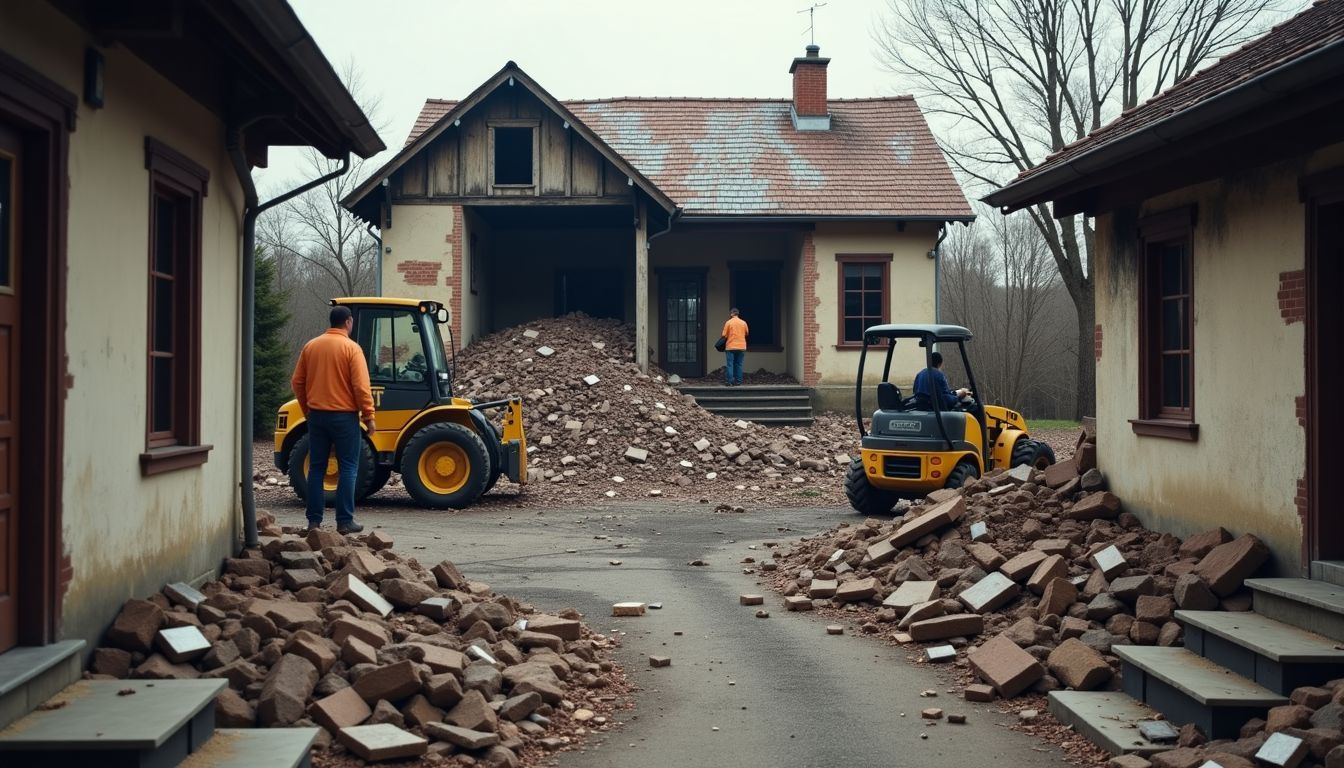
Houses constructed prior to 1980 might not provide the safety one might anticipate. Often, these buildings include materials that don’t withstand the passage of time effectively, particularly after an area has experienced a wildfire.
Consequently, the solidity of the structure could be compromised, making it hazardous for cleanup attempts unless an initial assessment for indications of damage or fragility is performed.
Unsteady floors and walls can result in falling debris, posing threats to homeowners and their loved ones during cleanup. Professionals suggest the usage of machinery such as backhoes or front loaders for disposing heavy rubble safely.
Such equipment aids in keeping a distance from potentially dangerous structures while executing the task. Prior to initiating any cleanup activity, performing a comprehensive investigation is imperative to detect and address these hazards in a timely manner.
Directing focus to necessary safety gear and equipment is the subsequent phase in ensuring a secure cleanup process after resolving issues related to the instability of the structure.
Essential Safety Gear and Equipment
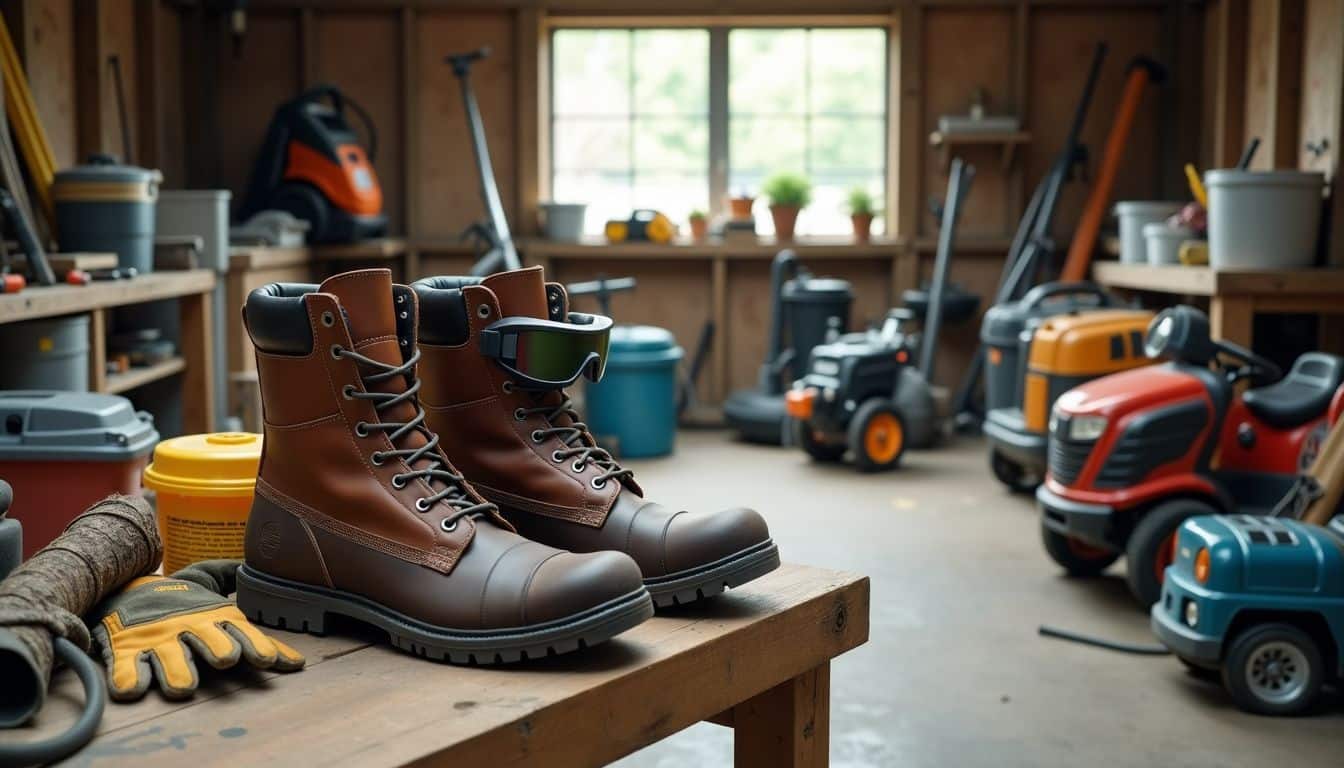
Wearing the right protective clothing is crucial before anyone starts clearing debris after a natural disaster. This includes sturdy boots, gloves, and eye protection to keep safe from hidden dangers.
Homeowners also need the proper tools for the job, like chainsaws for cutting fallen trees and wheelbarrows for moving heavy pieces of wood or wall fragments. For cleaning up water damage inside homes, high-powered wet vacuums and dehumidifiers are key to preventing mold growth in floor coverings and drywall.
When dealing with contaminated areas, special chemicals like trisodium phosphate help ensure all surfaces are sanitized properly. Safety should always come first during clean-up efforts to protect everyone involved from potential hazards.
Protective clothing
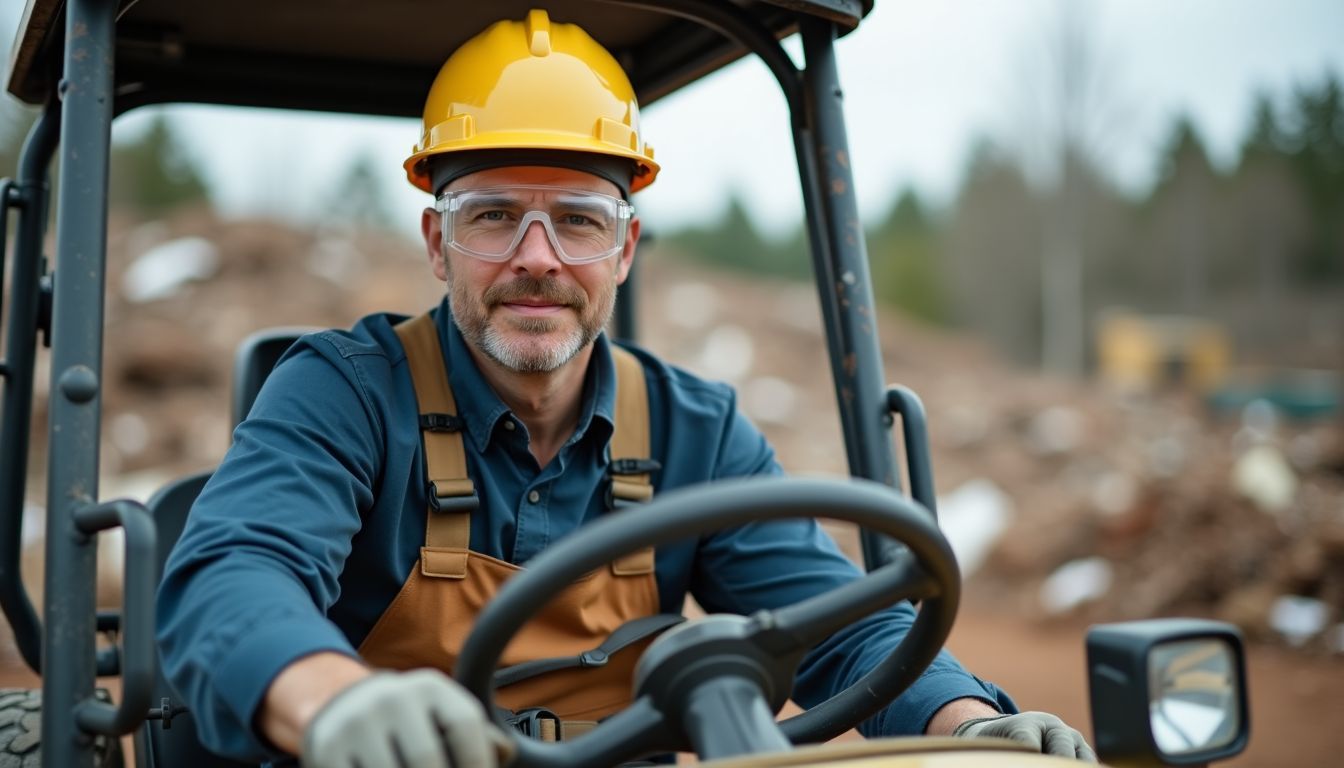
Protective attire significantly contributes to the safety of homeowners and parents during the tidying up after natural catastrophes. They should wear light, durable helmets with efficient suspension systems to shield their heads from descending debris.
Secure glasses or goggles keep eyes and face safe by blocking dust and harmful particles. Specialized barrier gloves are used to protect hands from sharp objects, chemicals, and contaminated water.
Regarding foot protection, safety shoes with protective toe caps and anti-slip features are fundamental for prevention of harm during the operation of heavy machinery like excavators, skid-steers, or stump grinders during land-clearing assignments.
Breath filters, or respirators, are also of utmost importance; these devices cleanse the air of hazardous gases and particles, defending the lungs when using cleaning products such as trisodium phosphate or when exposed to mold-covered wallboards and damp floor coverings.
This equipment elevates the personal safety of those participating in the cleaning work and also bolsters their productivity by enabling them to operate in risky environments with minimal danger.
Tools and machinery

Safe cleanup after a natural disaster requires the right tools and machinery. House owners should have a strong tractor for heavy lifting and debris removal. Also, wheel loaders can move large amounts of mulches or soil quickly.
For smaller tasks, using shop vacs helps clean wet and dry messes in homes.
Cutting boards, baby bottles, and mattresses often need deep cleaning after exposure to contaminated water. A high-quality carpet cleaner removes dirt and helps sanitize these items effectively.
Back flow preventers are essential to keep plumbing fixtures safe from contamination during the cleanup process.
Workers must use chainsaws with care to avoid injuries. They also need hearing protection because machines like grinding wheels create loud noises. These precautions ensure everyone stays safe while restoring their homes and environment back to health.
Conclusion

Cleaning up after a natural disaster requires caution and appropriate preparation. Homeowners should always review the damage carefully before initiating the cleanup process. Ensuring the proper safety gear, such as gloves and hard hats, is crucial to prevent injuries.
Staying vigilant of common hazards like unattended power lines or unstable structures is a wise course of action. Efficient tool usage accelerates the process and guarantees it’s done securely.
Maintain proximity to a first aid kit for potential emergencies and collaborate with others to improve safety measures. Finally, understanding appropriate waste disposal methods safeguards environmental health and maintains cleanliness in your vicinity.
By adhering to these recommendations, homeowners can approach cleanup measures with heightened assurance and safety.
Book cleaning services online with My Cleaning Angel now. It’s fast and easy, you get a quote with the price for the selected cleaning right away!
FAQs
1. What are some safety tips for cleaning up after a natural disaster?
Safety during clean-up post-natural disaster involves several steps. You must ensure environmental health by disposing of waste properly, including water closets and other sanitary facilities. Also, use household bleach to disinfect surfaces which might have been contaminated.
2. How can mulching be used in the cleanup process?
Mulching plays a crucial role in managing debris generated from a natural disaster. It helps reduce volume, making it easier to handle while also aiding in soil enrichment when used as ground cover.
3. Is household bleach safe for use during cleanup?
Yes, household bleach is an effective disinfectant that can help eliminate bacteria or viruses on surfaces during the cleanup process. However, always follow safety guidelines like diluting it appropriately before use.
4. Why is proper disposal of water closets important after a natural disaster?
Proper disposal of water closets ensures environmental health by preventing contamination of water sources and reducing disease spread risk associated with poor sanitation practices.

